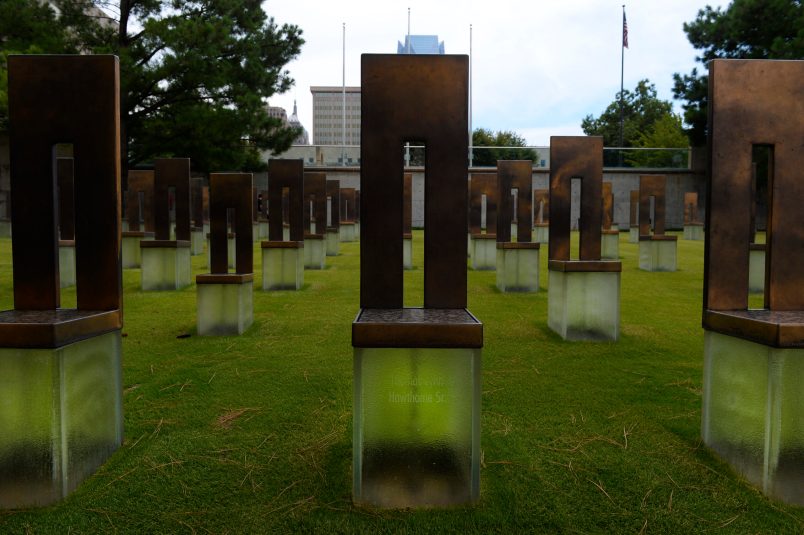Donald Trump breaks through so many boundaries and norms it’s easy to get desensitized. Even though there was some press notice of it, we need a lot more attention on the fact that Trump held his campaign kick off in Waco, Texas on the thirtieth anniversary of the Branch Davidian standoff. Not only is it a gruesome and hideous anniversary to commemorate politically, it also became a core anniversary around which violent far-right radicalism congealed and intensified. That happened right off the bat. The fiery end of the standoff provided the inspiration and chosen date for the bombing attack on the Oklahoma City federal building two years later. It is the germination point for all manner of right-wing terrorism since and Trump underlined the point by using his kickoff event to celebrate and honor individuals who followed his orders and stormed Capitol Hill on Jan. 6, 2021, with the intent of overthrowing the lawful government of the United States.
I note this because right-wing radicalism and domestic terrorism will increasingly be a focus of ours in the months and years to come. It has always been a focus, going back to the beginning of the site over 20 years ago. But the unfortunate fact is that these themes have moved more and more to the center of American public life.
There is not one connection or one kind of connection. It is, rather, more of a tissue of connections which have pulled tighter and grown more robust over the last decade, and especially since Donald Trump’s arrival on the political scene. We saw it most clearly in the Jan. 6 attacks themselves, when the man at the apex of the American government called on the various radical groups and degenerate individuals who make up this world to descend on the Capitol to help him illegally remain in power. We saw it earlier in the plot to kidnap and murder the Governor of Michigan. We see it palpably today as Trump awaits indictments from multiple jurisdictions and repeatedly threatens civil unrest and domestic terror attacks if he is held to account for his actions. We see it in a more indirect form in the evolution of the domestic gun culture in which figures like Kyle Rittenhouse are valorized for seeking out confrontations with political foes in which they then fear for their lives and react with lethal violence.
We have already and will continue to focus on this feature of contemporary American society because you cannot understand American politics without it. Radical and revolutionary groups today and in the past will sometimes speak of both participating in “electoral politics” and the “path of armed struggle.” There were versions of it with the IRA in Ireland, various Palestinian groups in the West Bank and in many other parts of the world. I’ve joked, darkly, over the years that this is somewhat analogous to the Republican Party today, both participating in elections but also fielding paramilitaries to conduct politics by other means. But it’s not a joke. It may not be quite that bad. But it’s no longer far off the mark, particularly with Trump and more broadly the part of the GOP won over by Trump — something that will outlast him.
So this will continue to be a focus of our coverage. We hope to expand that coverage and I hope you will support us in doing so.






